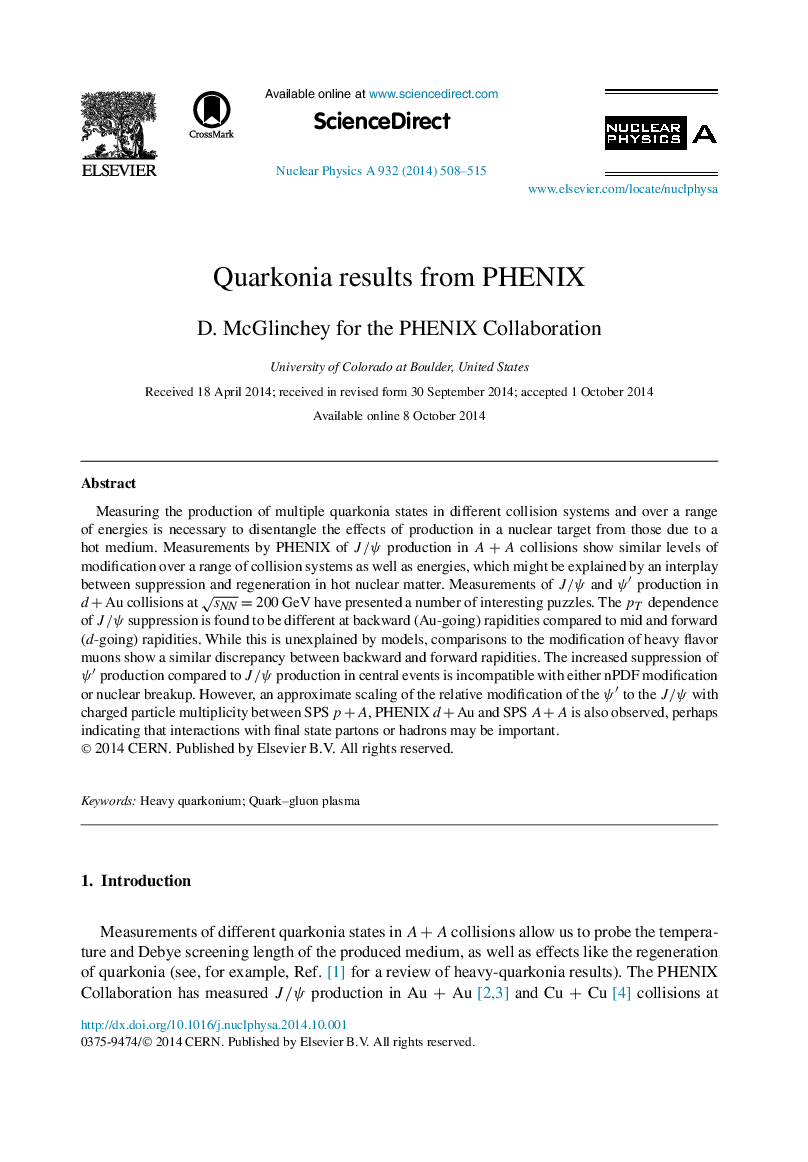| Article ID | Journal | Published Year | Pages | File Type |
|---|---|---|---|---|
| 1835852 | Nuclear Physics A | 2014 | 8 Pages |
Abstract
Measuring the production of multiple quarkonia states in different collision systems and over a range of energies is necessary to disentangle the effects of production in a nuclear target from those due to a hot medium. Measurements by PHENIX of J/Ï production in A+A collisions show similar levels of modification over a range of collision systems as well as energies, which might be explained by an interplay between suppression and regeneration in hot nuclear matter. Measurements of J/Ï and Ïâ² production in d+Au collisions at sNN=200 GeV have presented a number of interesting puzzles. The pT dependence of J/Ï suppression is found to be different at backward (Au-going) rapidities compared to mid and forward (d-going) rapidities. While this is unexplained by models, comparisons to the modification of heavy flavor muons show a similar discrepancy between backward and forward rapidities. The increased suppression of Ïâ² production compared to J/Ï production in central events is incompatible with either nPDF modification or nuclear breakup. However, an approximate scaling of the relative modification of the Ïâ² to the J/Ï with charged particle multiplicity between SPS p+A, PHENIX d+Au and SPS A+A is also observed, perhaps indicating that interactions with final state partons or hadrons may be important.
Keywords
Related Topics
Physical Sciences and Engineering
Physics and Astronomy
Nuclear and High Energy Physics
Authors
D. McGlinchey, PHENIX Collaboration PHENIX Collaboration,
